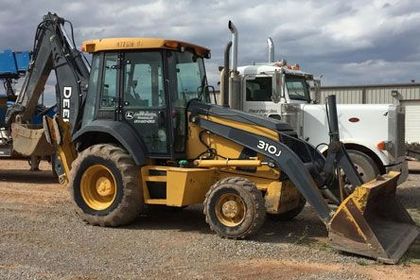Everything About Oil Field Equipment and Pipeline Equipment: Key Insights and Necessary Information
Oil field equipment and pipeline systems play a critical duty in the oil and gas market. They are important for the reliable removal and transport of hydrocarbons. Key parts, such as drilling rigs and tank, directly influence operational success. Meanwhile, innovations in technology assurance to improve security and efficiency. Comprehending these elements is important for any person entailed in or thinking about this intricate sector, as it sets the phase for deeper expedition of industry techniques.

Introduction of Oil Field Equipment
As the demand for oil remains to expand, comprehending the equipment made use of in oil areas ends up being progressively important. Oil field equipment includes a variety of equipment and tools important for exploration, extraction, and handling. Trick parts consist of piercing rigs, which are vital for getting to oil tanks, and manufacturing tools, such as separators and pumps, that assist in the extraction process. Superior Oilfield pipeline equipment rentals. Furthermore, tank play a substantial role in holding unrefined oil before transportation. Safety and security equipment, consisting of blowout preventers and pressure gauges, assures functional security and performance. Each tool functions cohesively to optimize production and keep effective process. Experience with this equipment is necessary for professionals in the sector to guarantee effective operations and adherence to security standards
Sorts Of Drilling Rigs and Their Applications
Drilling rigs function as the foundation of oil extraction procedures, with numerous types designed for specific geological conditions and functional needs. The most usual kinds include rotary exploration rigs, which utilize a revolving drill little bit to penetrate the earth, and wire tool rigs, recognized for their percussion boring method. For offshore operations, jack-up rigs and semi-submersible rigs give stability and assistance in aquatic atmospheres. Furthermore, directional exploration rigs make it possible for drivers to pierce at angles, getting to down payments that are not up and down easily accessible. Each rig type has special advantages, optimizing efficiency and safety based upon the exploration setting. Choosing the suitable rig is vital for making the most of source removal while reducing environmental influence and functional expenses.

Essential Pipeline Equipment and Their Functions
Pipeline facilities is essential for the transportation of oil and gas from removal sites to processing centers and end-users. Various important devices components facilitate this procedure. Pipes themselves function as the key conduits, made to withstand high pressure and corrosive materials. Pump terminals are crucial for maintaining flow by boosting pressure along the pipeline. Valves play a crucial role in managing flow and isolating sections for upkeep. Furthermore, installations and adapters ensure safe and secure joints between pipeline sections. Keeping track of systems, consisting of circulation meters and pressure sensors, are important for spotting leakages and optimizing circulation prices. Pigging equipment is employed for upkeep and cleansing, securing pipeline honesty and performance. check here Together, these elements create the foundation of a reputable pipeline system.
Innovations and Technologies in Oil and Gas Equipment

Safety And Security and Maintenance Practices in the Oil Sector
While the oil industry has made substantial strides in innovation and effectiveness, the relevance of robust security and upkeep techniques can not be overemphasized. Effective safety and security procedures are important to secure workers and the setting, reducing the danger of crashes and spills. Routine evaluations and maintenance of devices help identify prospective issues before they rise, making sure functional integrity. Training programs for workers are crucial, emphasizing the value of security awareness and emergency situation feedback treatments. In addition, adherence to market guidelines and standards promotes a society of safety. Carrying out sophisticated monitoring technologies can even more improve maintenance techniques, permitting real-time assessments of devices conditions. Ultimately, prioritizing security and maintenance is important to the sustainability and success of the oil sector.
Regularly Asked Concerns
What Are the Environmental Impacts of Oil Field Equipment?
The environmental influences of oil field equipment include environment devastation, water contamination, and air pollution (Superior Rentals reviews). In addition, devices malfunction can bring about spills, negatively affecting wild animals and ecosystems, highlighting the requirement for rigorous guidelines and monitoring
How Is Oil Field Equipment Moved to Remote Locations?
Transferring oil field equipment to remote areas commonly involves specialized lorries, helicopters, or barges. Logistics firms coordinate routes, ensuring equipment arrives securely and successfully, considering surface and access to minimize delays and take full advantage of performance.
What Regulatory Requirements Govern Oil Field Equipment?
Regulative criteria regulating oil field equipment primarily include security, ecological protection, and operational effectiveness standards. Agencies such as OSHA and EPA impose these regulations to guarantee secure methods and minimize environmental impact in oil removal procedures.
What Abilities Are Required to Run Oil Field Equipment?

Exactly How Do Oil Costs Impact Equipment Need and Use?
Oil costs substantially affect equipment need and use. Greater costs normally lead to raised exploration and production tasks, driving need for machinery. On the other hand, lower prices may result in decreased procedures and reduced requirement for equipment.